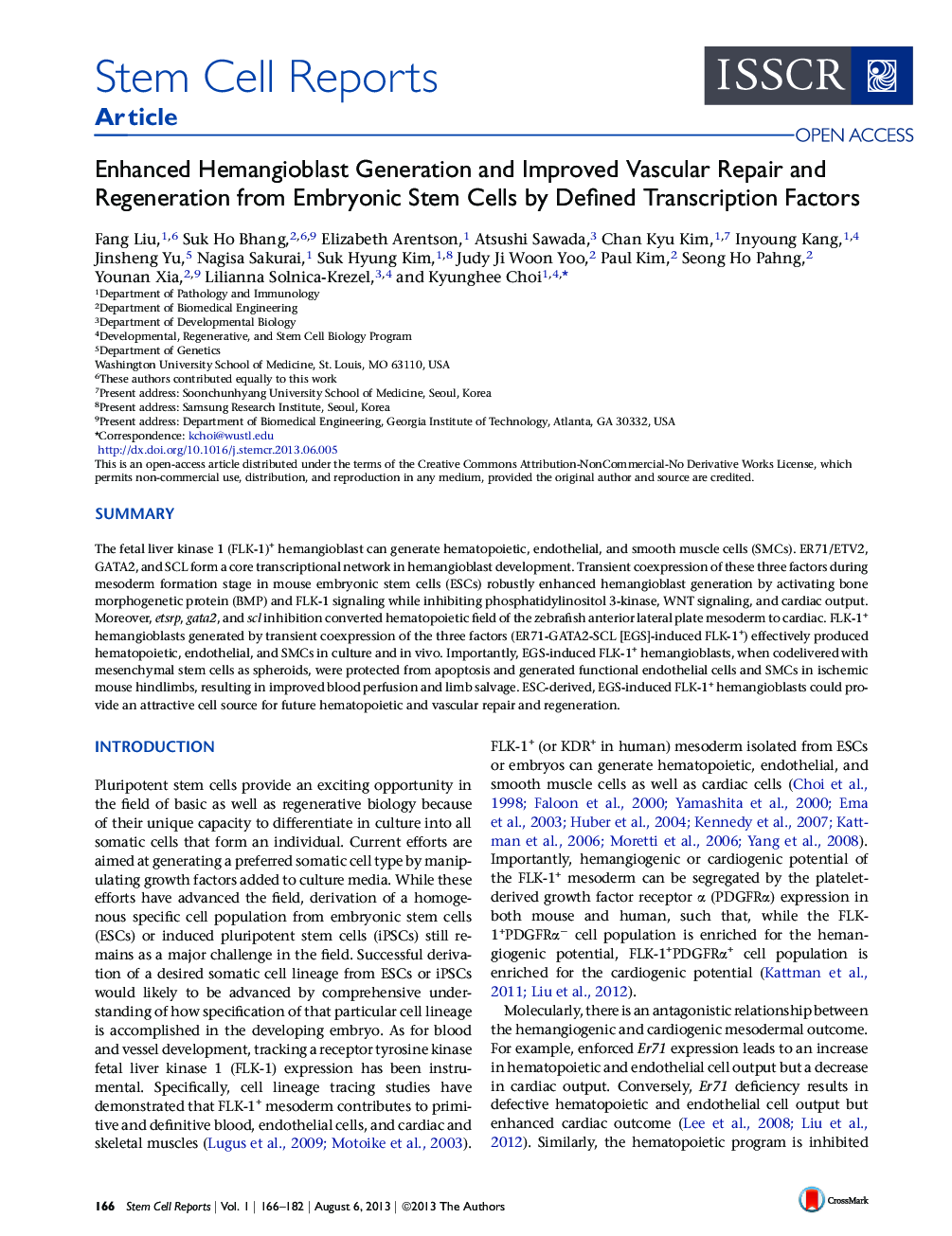| Article ID | Journal | Published Year | Pages | File Type |
|---|---|---|---|---|
| 2093529 | Stem Cell Reports | 2013 | 17 Pages |
•ER71, GATA2, and Scl form a core transcriptional network in hemangioblast development•ER71, GATA2, and Scl coexpression enhances hemangioblast generation from ESCs•BMP, Wnt, VEGFR2, and PI3 kinase signaling pathways regulate hemangioblast development•Hemangioblast and MSC spheroids can improve vascular repair and regeneration
SummaryThe fetal liver kinase 1 (FLK-1)+ hemangioblast can generate hematopoietic, endothelial, and smooth muscle cells (SMCs). ER71/ETV2, GATA2, and SCL form a core transcriptional network in hemangioblast development. Transient coexpression of these three factors during mesoderm formation stage in mouse embryonic stem cells (ESCs) robustly enhanced hemangioblast generation by activating bone morphogenetic protein (BMP) and FLK-1 signaling while inhibiting phosphatidylinositol 3-kinase, WNT signaling, and cardiac output. Moreover, etsrp, gata2, and scl inhibition converted hematopoietic field of the zebrafish anterior lateral plate mesoderm to cardiac. FLK-1+ hemangioblasts generated by transient coexpression of the three factors (ER71-GATA2-SCL [EGS]-induced FLK-1+) effectively produced hematopoietic, endothelial, and SMCs in culture and in vivo. Importantly, EGS-induced FLK-1+ hemangioblasts, when codelivered with mesenchymal stem cells as spheroids, were protected from apoptosis and generated functional endothelial cells and SMCs in ischemic mouse hindlimbs, resulting in improved blood perfusion and limb salvage. ESC-derived, EGS-induced FLK-1+ hemangioblasts could provide an attractive cell source for future hematopoietic and vascular repair and regeneration.
